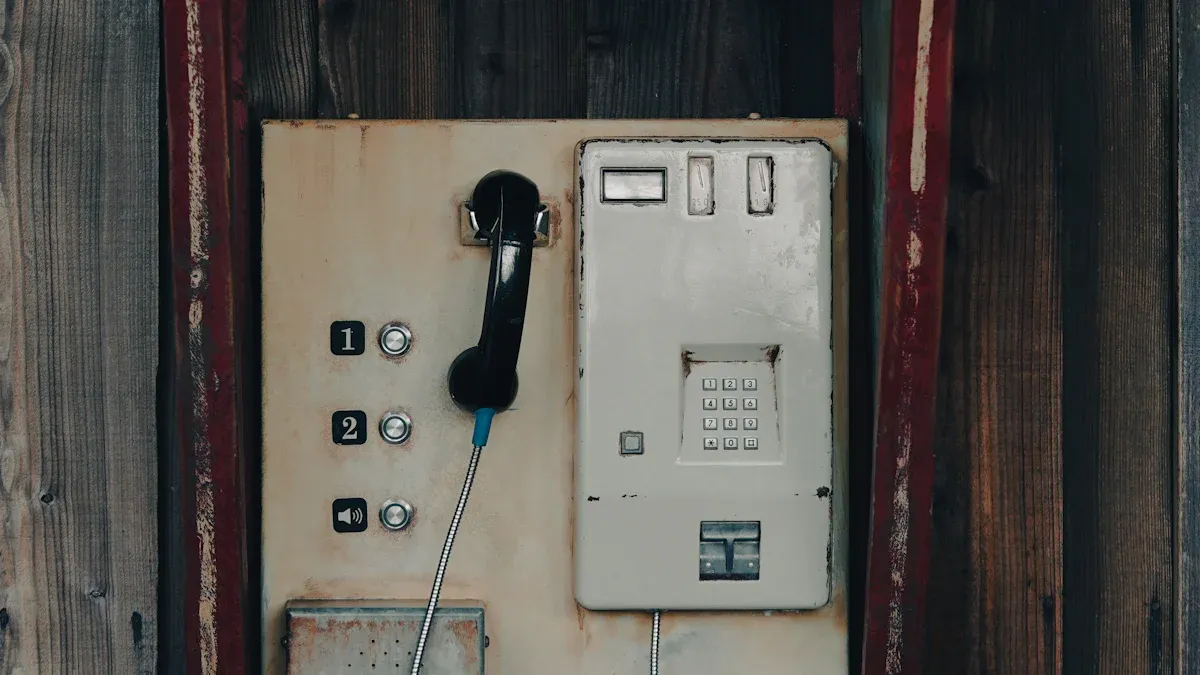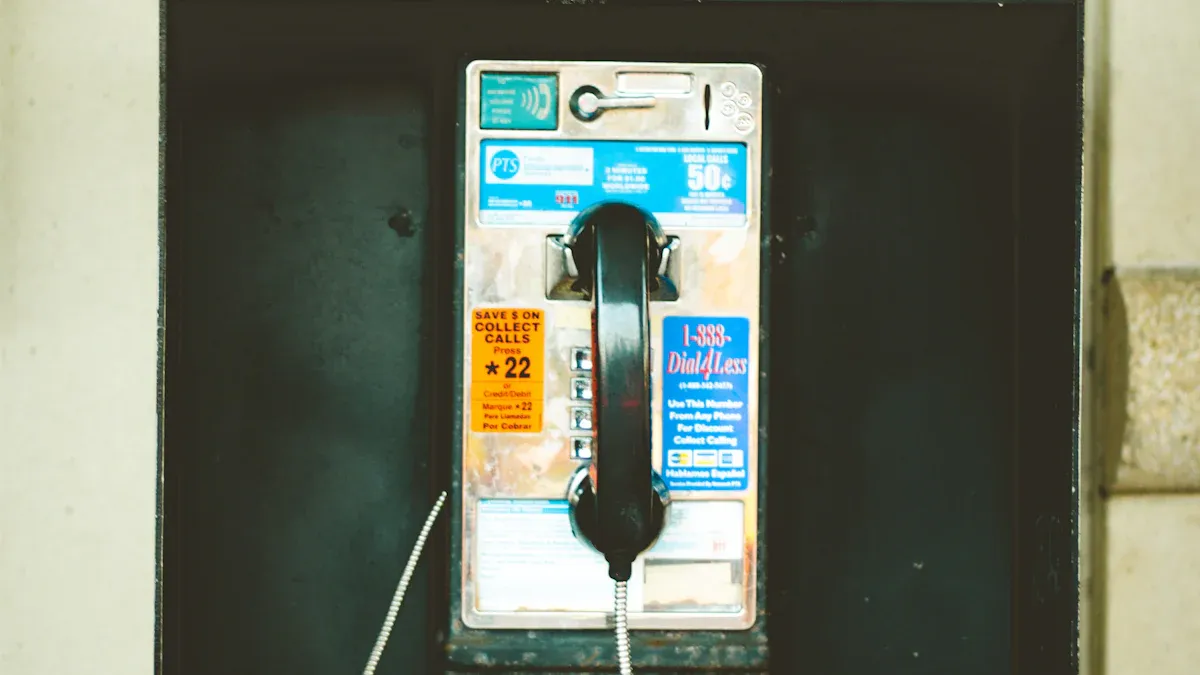
Railway stations demand reliable equipment. An Industrial Telephone Handset withstands harsh environments and heavy use. Staff trust these devices for clear, direct communication. Modern devices often fail under stress. This equipment keeps operations safe. Practical needs, not nostalgia, drive the continued use of these sturdy handsets.
Key Takeaways
- Industrial telephone handsets provide reliable and clear communication in harsh weather and tough conditions, ensuring safety during emergencies.
- These handsets resist vandalism and heavy use with strong materials and protective designs, reducing repair costs and downtime.
- Their simple design and compliance with safety standards make them easy to use for everyone, supporting quick emergency responses and cost-effective maintenance.
Industrial Telephone Handset: Reliability, Durability, and Safety

Performance in Extreme and Harsh Conditions
Railway stations face tough environments. Equipment must work in freezing winters and scorching summers. An Industrial Telephone Handset performs reliably in these conditions. Engineers test these devices in temperature ranges from -40°C to 80°C. They simulate snow, ice, desert heat, and sudden temperature changes. Devices must keep working even when exposed to moisture, dust, wind, and salt.
- Endurance tests show that handsets maintain functionality and accuracy despite rapid temperature swings.
- GAI-Tronics telephones are weather and vandal-resistant, rated up to IP65. This rating means they can handle rain, dust, and other harsh elements.
- MIL-STD-810G testing includes high and low temperature, temperature shock, and humidity. These tests prove that the handsets can survive real-world railway conditions.
A table of performance metrics highlights the safety and reliability of these devices:
| Metric | Value | Relevance to Safety Claims |
|---|---|---|
| Recovery Time for Link Failures | < 50 milliseconds | Ensures rapid restoration of communication, critical in emergencies |
| Service Availability | > 99.999% uptime | Guarantees near-continuous operation, minimizing communication downtime |
| Hardware Robustness | -25°C to +60°C | Demonstrates environmental durability for reliable operation in harsh conditions |
Resistance to Vandalism and Heavy Use
Public transportation environments often face vandalism and rough handling. An Industrial Telephone Handset uses anti-vandal technology to stay operational. Tamper-resistant screws, reinforced glass, and protective casings prevent damage. These phones resist smashed glass, broken buttons, and damaged receivers. Fire-resistant and weatherproof materials add another layer of protection.
- Some models include integrated cameras to detect vandalism attempts.
- The JWAT306-1 model features an aluminum alloy die-casting shell for high mechanical strength.
- A pivoted door design protects internal parts from rough handling.
- Devices operate reliably across a wide temperature range, from -40°C to +60°C.
- The phones integrate with emergency systems, supporting quick response and safety.
These features reduce repair costs and downtime. Staff and passengers can trust the phones to work when needed.
Direct, Secure Communication Lines
Railway operations depend on clear and secure communication. An Industrial Telephone Handset provides a direct line between staff and control centers. Unlike mobile phones, these handsets do not rely on external networks. This setup reduces the risk of dropped calls or network failures during emergencies.
Empirical studies in harsh environments, such as oil and gas plants, show that rugged handsets maintain operational capacity even in wind, rain, and cold. Operators sometimes struggle with bulky devices, but the handsets still function when other tools fail. Safety compliance standards, like Atmosphères Explosives directives, ensure that these devices remain safe in hazardous areas.
Note: Direct communication lines help staff respond quickly to emergencies, keeping passengers and operations safe.
Industrial Telephone Handset: Simplicity, Compliance, and Cost
Ease of Use in Emergencies
Railway stations require communication tools that anyone can use quickly during a crisis. An Industrial Telephone Handset offers a simple and intuitive design. Staff and passengers do not need special training to operate these devices. The clear layout and tactile buttons help users make calls even under stress.
- Emergency call boxes use industrial telephone handsets with loudspeakers and visual indicators.
- These devices appear in many public spaces, including transportation hubs and industrial sites.
- Their design allows for immediate contact with emergency services.
- Workers can report accidents or hazards without delay.
- Strategic placement and easy operation help reduce emergency response times.
These features support rapid action when every second counts. The straightforward design ensures that help is always within reach.
Meeting Safety and Regulatory Standards
Railway stations must follow strict safety and accessibility rules. Industrial telephone handsets meet these requirements through careful engineering and compliance with official standards. Regulators such as the FCC and Access Board set guidelines for telecommunications equipment. These standards cover magnetic performance, interference reduction, and accessibility for people with disabilities.
| Regulatory Source | Standard/Guideline | Key Requirements | Applicability |
|---|---|---|---|
| Access Board ICT Standards | TIA-1083-B | Handset magnetic measurement procedures and performance requirements | Wireline handsets including cordless handsets must conform to this standard |
| Access Board ICT Standards | ANSI/IEEE C63.19-2011 | Interference reduction and magnetic coupling for wireless handsets | Wireless handsets must conform to this standard |
| Revised Section 508 Standards | Section 508 of the Rehabilitation Act | Accessibility requirements for telecommunications equipment, including volume gain, interference reduction, and compatibility with hearing technologies | Applies to ICT with two-way voice communication used by federal agencies and public access |
| FCC Regulations | 47 CFR Part 15 | Regulation of radio frequency emissions from electronic devices, including telecommunications equipment | Covers intentional and unintentional radiators, ensuring compliance with RF emission limits |
The FCC’s 47 CFR Part 15 ensures that industrial telephone handsets do not interfere with other electronic devices. These regulations require testing for electromagnetic emissions. Compliance with these standards guarantees safe and reliable operation in busy environments.
Cost-Effectiveness and Maintenance Advantages
Railway operators must manage costs while maintaining safety. An Industrial Telephone Handset provides a long service life with minimal maintenance. The rugged construction reduces the need for frequent repairs. Replacement parts are widely available and easy to install.
Operators benefit from:
- Lower repair and replacement costs due to durable materials.
- Fewer service interruptions, which keeps communication lines open.
- Simple maintenance routines that do not require specialized skills.
These advantages help railway stations control expenses and maintain high safety standards.
Why Modern Alternatives Fall Short
Modern communication devices, such as smartphones and tablets, often fail in demanding railway environments. These devices depend on wireless networks, which may not work during power outages or emergencies. Touchscreens can become unresponsive in cold or wet conditions. Fragile components break easily under heavy use.
An Industrial Telephone Handset avoids these problems. Its direct connection to the communication network ensures reliability. The sturdy design withstands rough handling and extreme weather. Staff can trust these handsets to work when other devices cannot.
Tip: For mission-critical communication, choose equipment designed for reliability and ease of use. Industrial telephone handsets deliver both, making them the best choice for railway stations.
Railway stations continue to choose the Industrial Telephone Handset for its proven reliability and safety. Modern devices cannot match its performance in harsh environments. Operators trust this equipment to keep communication lines open. Until new technology meets these standards, this handset remains essential.
Safety and durability always come first in railway operations.
FAQ
Why do railway stations avoid using smartphones for emergency communication?
Smartphones depend on wireless networks. Industrial handsets use direct lines. Staff need reliable communication during power outages or network failures.
How do industrial telephone handsets support accessibility?
These handsets include large buttons and loud audio. People with disabilities can use them easily. Compliance with accessibility standards ensures equal access.
Can industrial telephone handsets connect to modern systems?
Yes. Many models support integration with digital and VoIP systems. Operators can upgrade communication networks without replacing all handsets.

